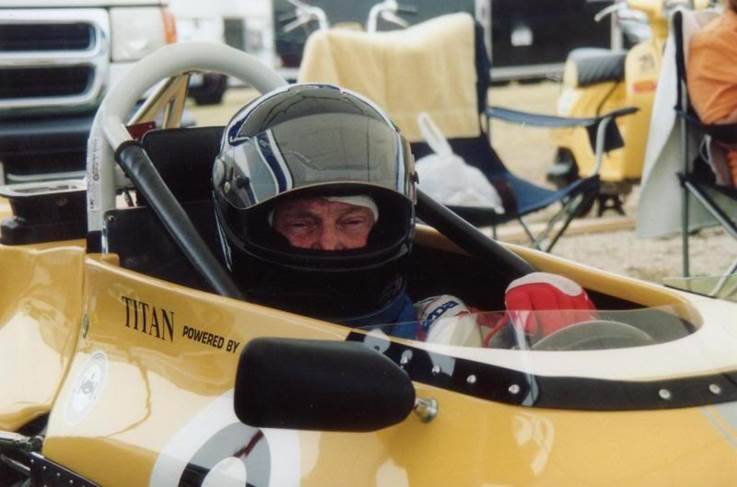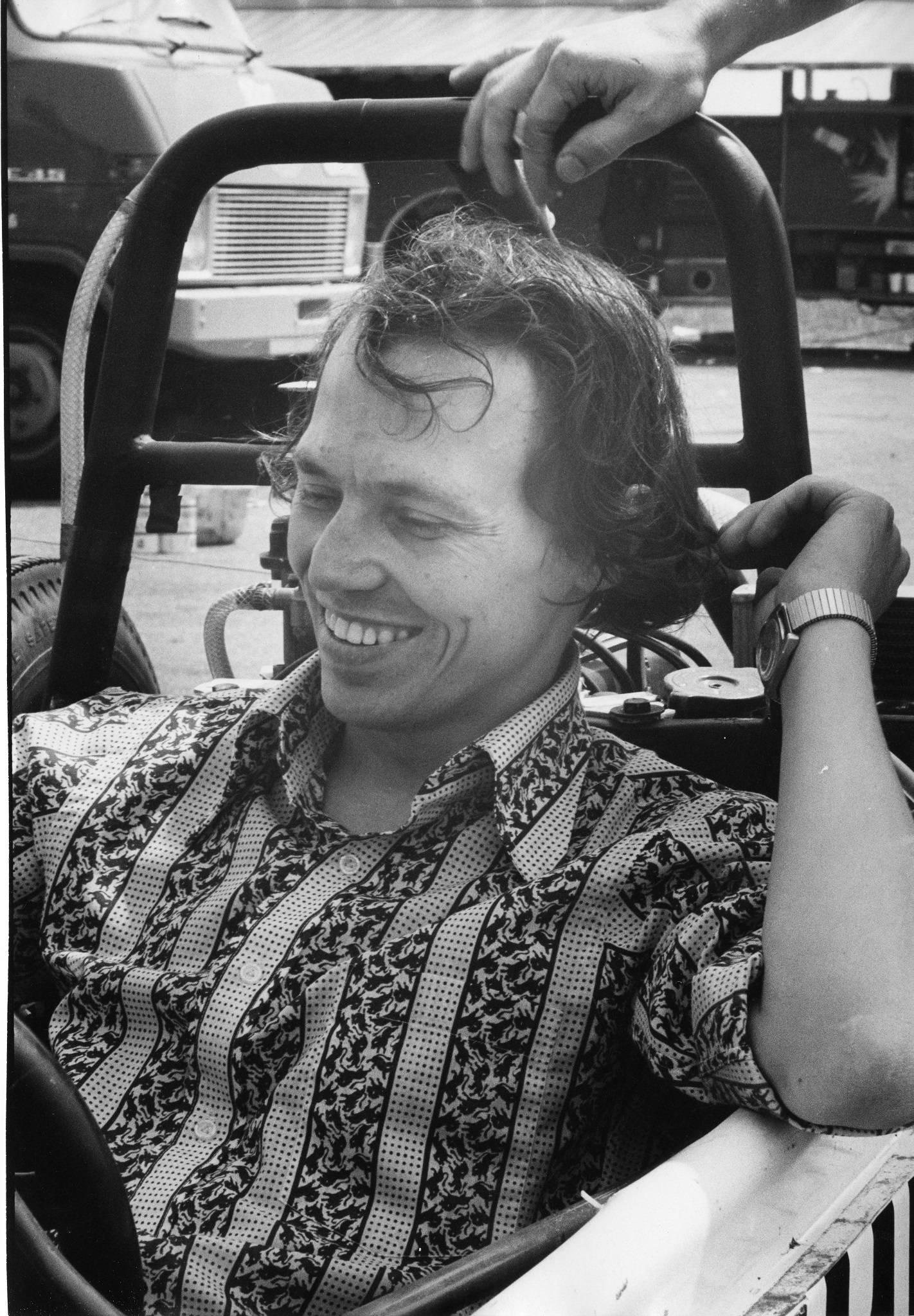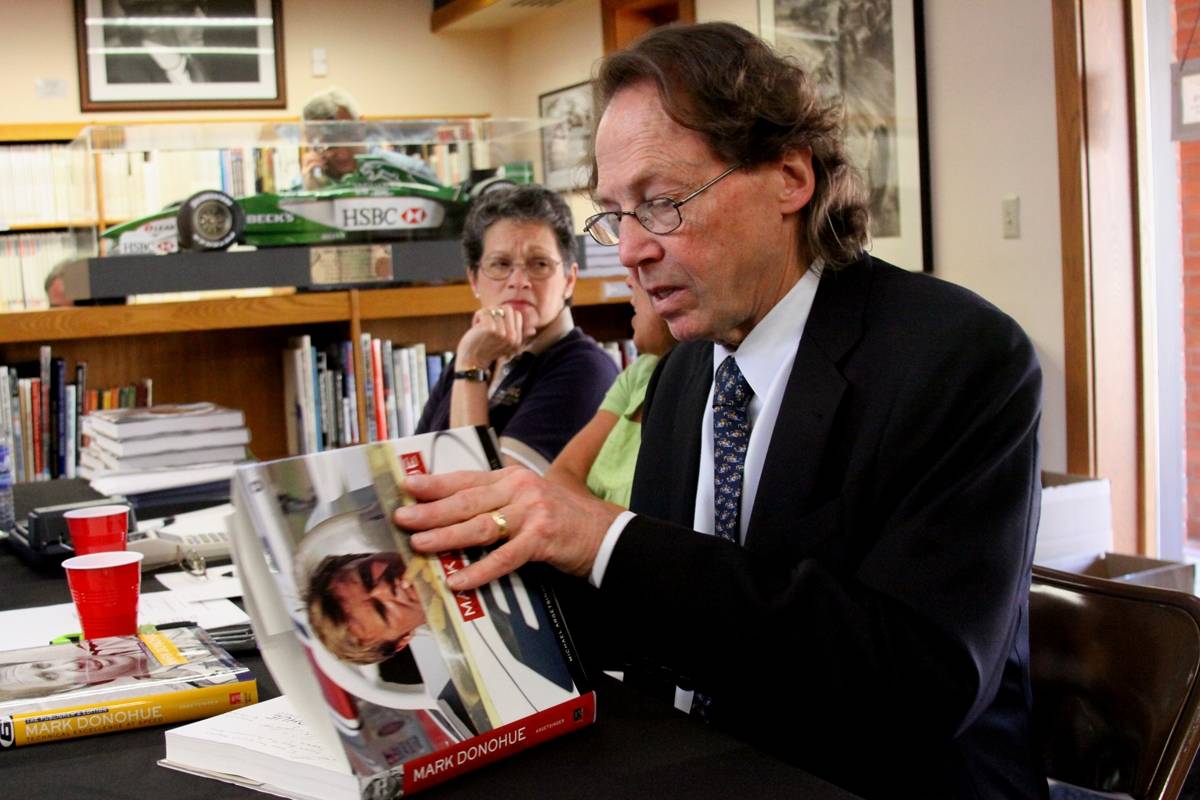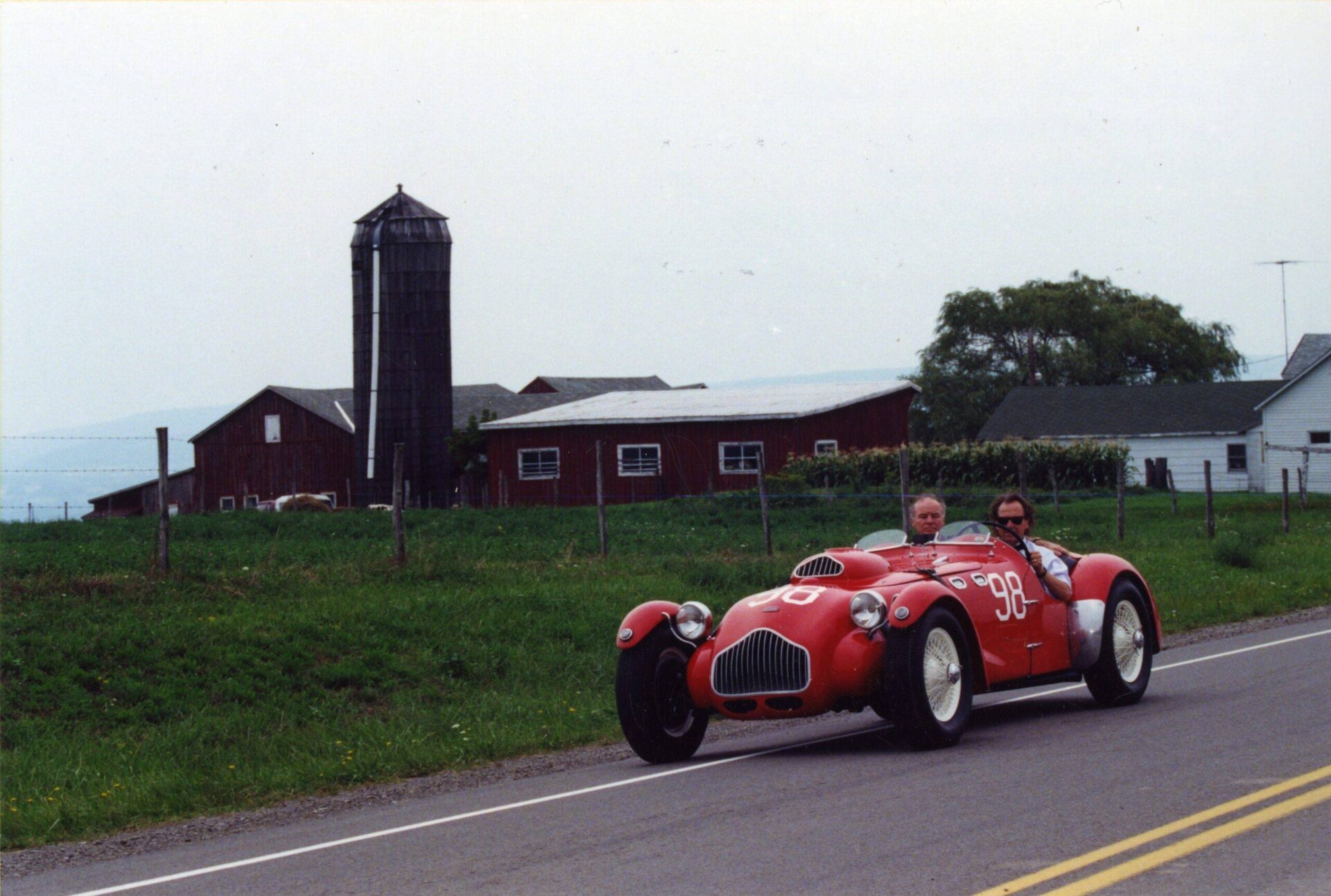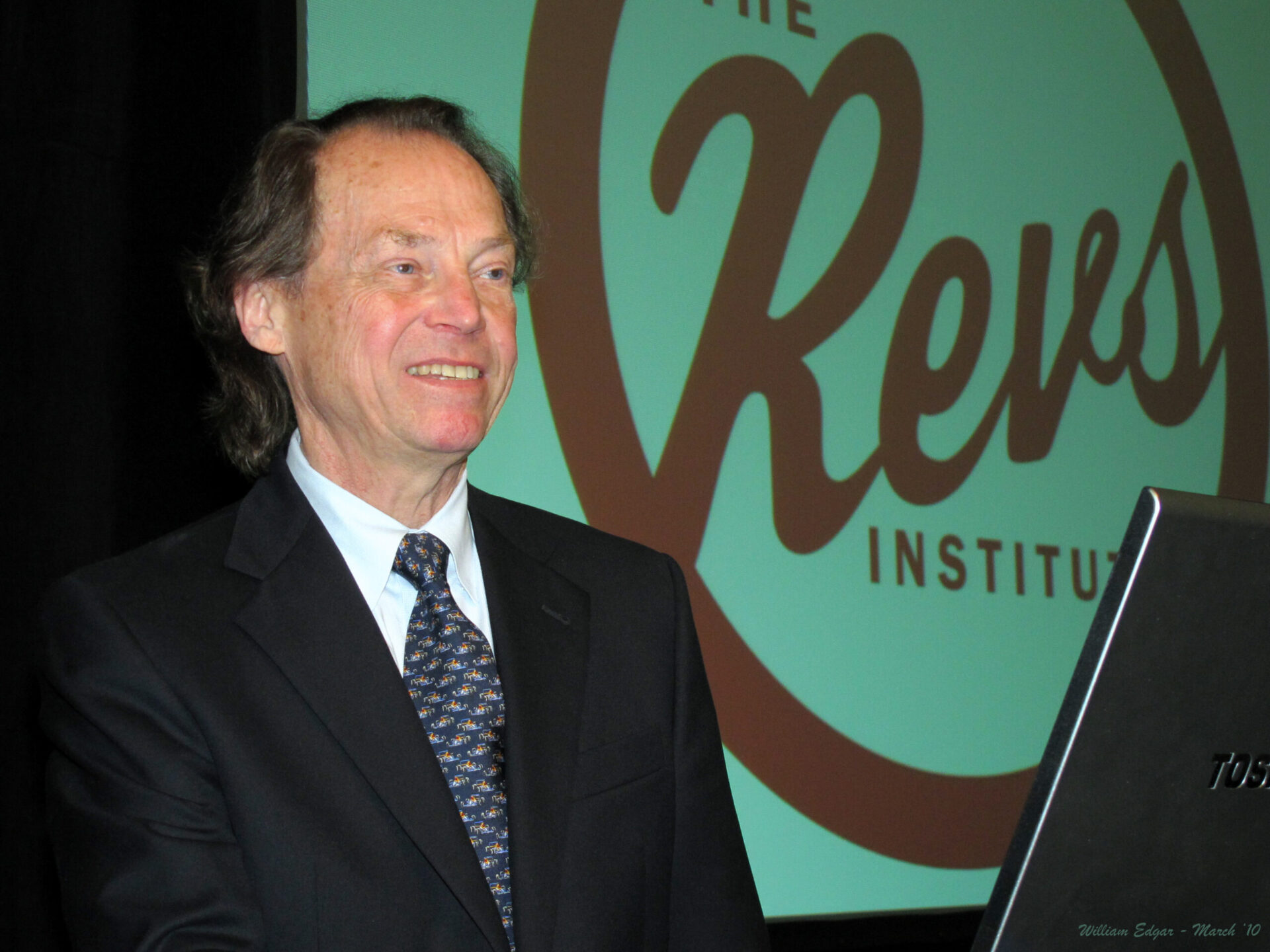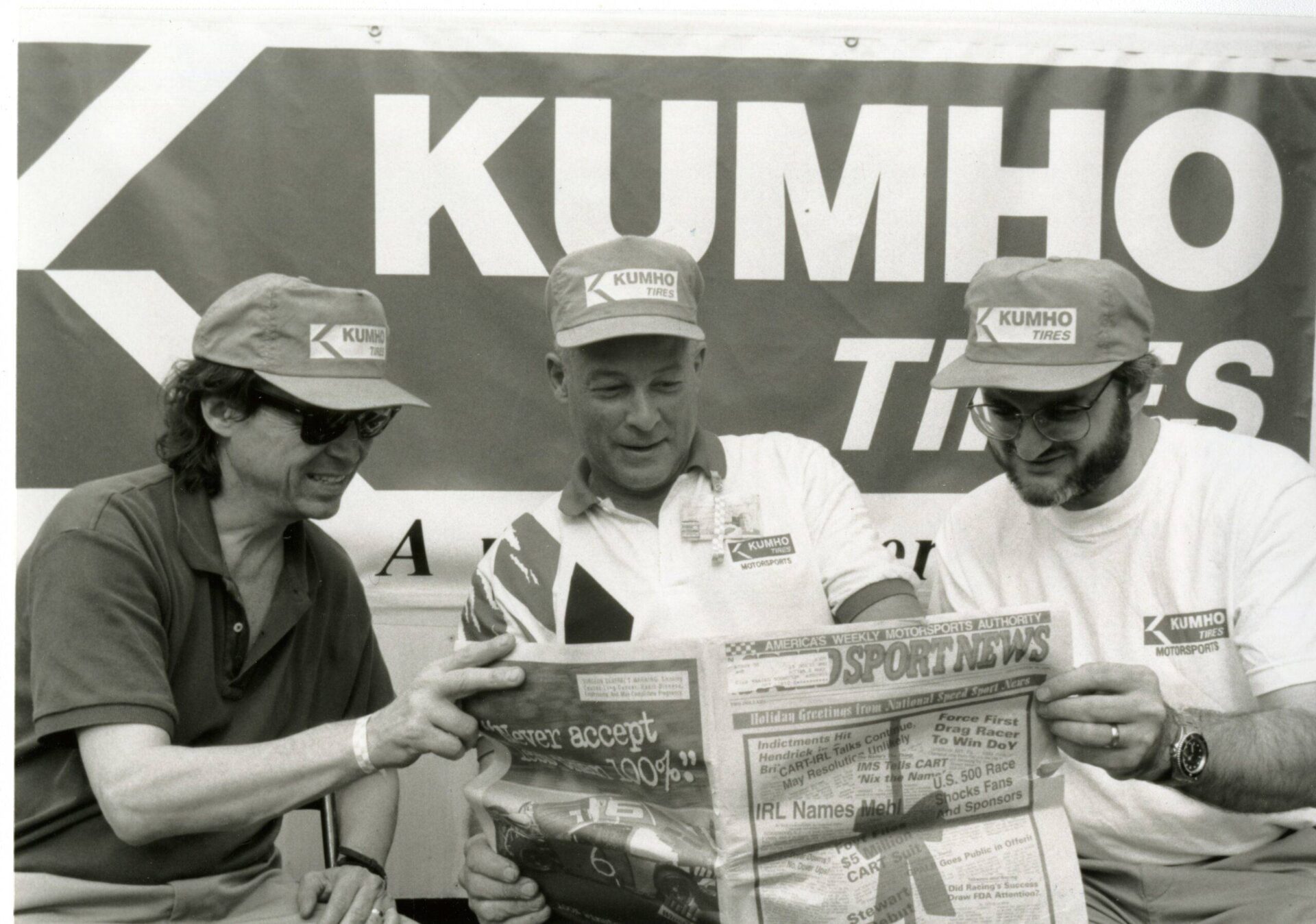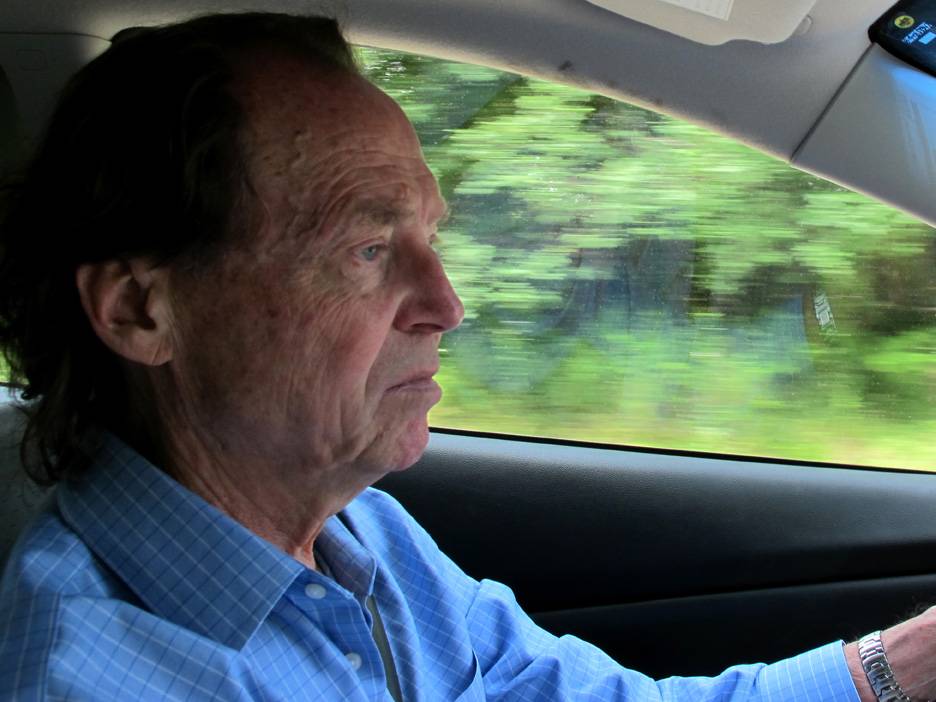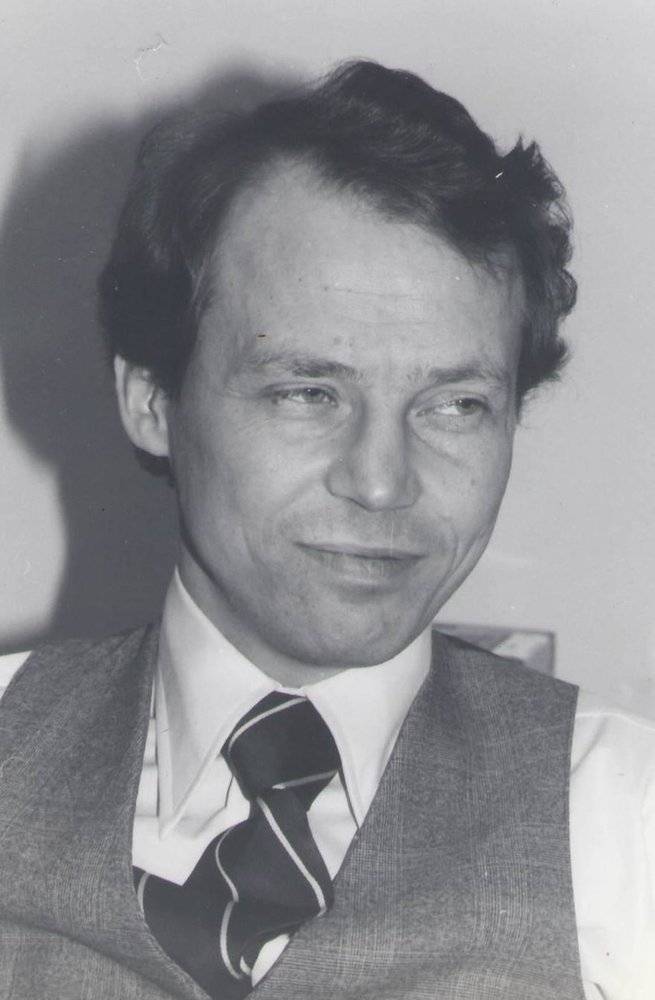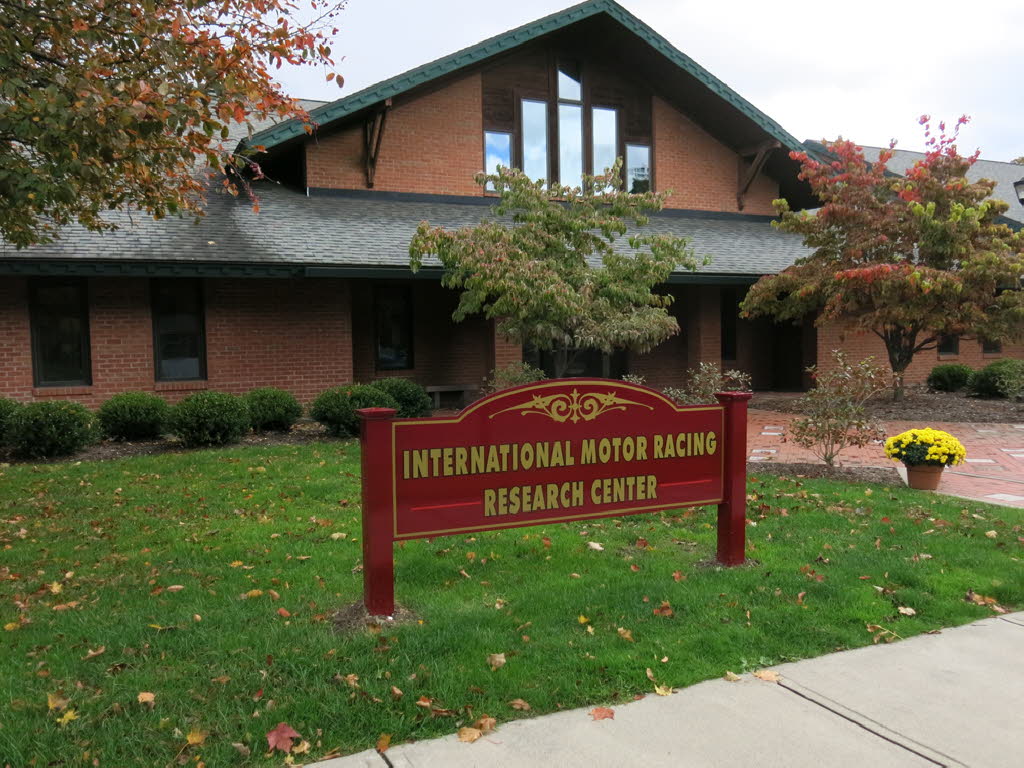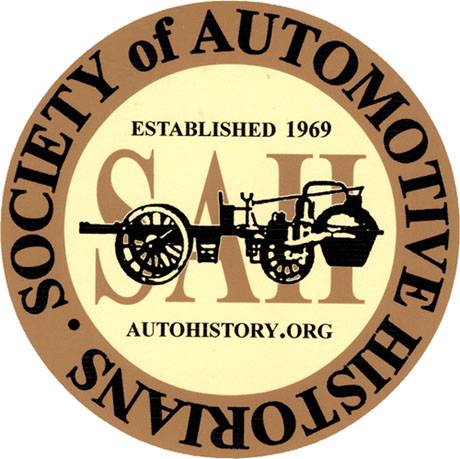Has Formula One left behind its gritty, dangerous and somewhat esoteric past to become a cross between the World Cup and Disneyland? How much of its new global popularity can summed up as (perhaps merely) “media spectacle?”
Bio
James Miller’s engagement with Formula 1 includes chatting about race strategy with Nikki Lauda at the 1977 US Grand Prix, where Lauda won his second world championship. Now it involves at-home viewing of real-time, in-car camera images on a flat screen TV.
Dr. Miller is professor emeritus of communications at Hampshire College. He has studied new media as a Fulbright researcher in Paris and a visiting professor at MIT’s Media Lab.
Notes
Transcript
Break/Fix Hosts: [00:00:00] Hello and welcome to the Gran Touring Motor Sports Podcast Break Fix, where we’re always fixing the break into something motor sports related. The following episode is brought to you in part by the International Motor Racing Research Center, as well as the Society of Automotive Historians, the Watkins Glen Area Chamber of Commerce and the Arts Inger.
James Miller’s engagement with Formula One includes chatting about race strategy with Nicki Lauda at the 1977 US Grand Prix, where Lauda won his second world championship. Now it involves at-home viewing of real-time in-car camera images on a flat screen. TV has Formula One left behind. Its gritty, dangerous, and somewhat isoteric pass to become a cross between the World Cup and Disneyland.
Think Miami. How much of its new global popularity can be summed up as perhaps merely media spectacle? Dr. Miller is Professor Emeritus of Communications at Hampshire College. He has studied new media [00:01:00] as a Fulbright researcher in Paris and a visiting professor at MIT’s Media Lab. All right, ladies and gentlemen, we get to the presentations and the first one is Formula One.
Bob Barr, President SAH: From Circus to Media Spectacle. Jim Miller will be our presenter. And let me get his program up. All right, Jim Miller, folks.
James Miller: Well, I’m a little more nervous than I expected to be after Don said that an academic and hope for eight or 10 people have taken interest . So I’d like to start by expressing my pleasure in noting that there’ll be two or three other presentations today and tomorrow concerning media and motor sports.
So let’s add that to, uh, Don’s list of future. Discussion topics. I may be discussing something that’s obvious to most of us in in this room, but I’d like to take a first stab at describing it systematically and then offer some preliminary analysis. It’s really a [00:02:00] first draft of a, what I am discovering to be a really rich subject that I hope to develop further, so please.
in his remark, brawn is writing in the introduction of the authorized 70th anniversary Formula one book written by Morris Hamilton. So we should take his comments as the official word. GAO was speaking informally in an interview, but I think the common takeaway from both remarks is that intentional fundamental change is underway in F1 with very specific objectives.
At the same time, there’s a perceived. Of alienating already contented Formula One fans, but I want to argue here that there’s something bigger and maybe unexpected, in fact, with greater consequences at play. So let’s begin by looking at a casual variety of indications that F1 is becoming a media [00:03:00] spectacle.
Now, I can’t help but make an aside. The presentation of drivers I think is a critical element. Of the F1 media spectacle, you know, max versus Netflix, and now it’s Max versus who is it? O Sky. And then Ricardo’s Traves. What’s developing with drivers and apparently appealing to many new audience members is pretty close to reality television, which, as you know, mixes factual programming with sub-genres like game shows, travel logs, talent, competi.
Fly on the wall documentaries, creating what’s called a fame cycle for the individuals involved. This oversharing regarding drivers includes the mob of fans in the paddock that you saw at the Mexican Grand Prix recently, and it seems that half of Martin Bruns grid walk interviews are with celebrity friends of drivers.
There’s also a [00:04:00] category that might be even larger still that the bbc, for example, calls factual entertainment. . And then I think the media net has gotten so broad that there’s an in-depth profile of Total Wolf in the current issue of what magazine, the New Yorker. So, uh, let’s begin though by establishing a baseline for change.
A past that people affectionately call the F1 Circus. What might they mean? Actual circuses were itinerant examples of live art. According to a British historian, they. Sideshows on the way to the main event in the famous three rings. Think about track design critically. He, uh, Helen Stoddard says that this is a really pungent quote.
The circus promotes itself as a public fantasy, a space of exceptionalism, escape, and danger, where the rules [00:05:00] that seem to govern the world outside have no currency. F1 was informal, even a bit amateurish with gentleman team owners, uh, do-it-yourself atmosphere, uh, shoestring operations that included very limited driver’s salaries.
So Phil Hill reports that Ferrari never gave him a salary. He only took a share of the, uh, start and finished money. And of course, all of that was against the genuinely mortal danger of every race. For my purposes, the circus was the sixties through the eighties. . On our last gathering here, I mentioned to Duke that I had come to several GP races here.
When was that? In the seventies. Ah, the golden days. He said he’s not the only one who might think that way. This is an image from the uh, center’s own website. This is 1972 or three. But beyond that, people looking back in time have characterized Watkins. [00:06:00] As something special, and I think very much like the circus that I’m trying to describe, which to me, hints at the possibility of making Watkins Glen a kind of in-depth case study, a baseline for a comparison.
There were lots of things that went, oh, how did that get in there? Actually, I think the year before they, uh, sacrificed a Greyhound bus. That’s why the famous Bogue came to. But that was part of the circus atmosphere, for sure. Now, another way more formally of identifying the nature of the circus was a much smaller scale with respect to race numbers and a relative lack of media attention.
So here you can see how few the races were compared to today. An early look at New York Times coverage shows, very few articles about Formula One in their sports. , the television story is a bit more complicated and it goes farther back in time than I realized. But we must remember that [00:07:00] early on, American cable television didn’t have near the penetration rate that it has now.
And some of these channels were premium, meaning you had to pay extra to get them. And then of course, many of us remember the NBC coverage as being three talking heads in a studio saying obvious things about the global television feed. Maybe this is a, a record. Slowly increasing coverage in the realm of television, but mostly I think it’s, it’s pretty limited.
Obviously, the circus left town in uh, January of 2017 when Liberty bought Formula One and immediately began a cascade of significant changes, and here were just a few of them. Media related changes are very significant and involve big players in that industry, which I think underscores the seriousness of.
And the very substantial capacity to invest in those changes. So here’s a sketch of the principle media organizations involved with [00:08:00] respect to television in the United States, and you can see that Liberty Media is strangely the smallest fish in this pond. So, okay, imagine you’re accepting this contrast that I’m trying to draw between the circus and the spectacle.
What, after all, is a media spect. Well, I would say that it’s a hallmark of our time and it has these broad conceptual categories, which we could talk about at length, but we don’t have time for that. So I’ll just say that global CIR scale is really important. It means world circulation, although it’s American inflected.
The media spectacle has been adopted to local conditions in a way that I think has created a nearly universal multimedia form. These things take place because they’re driven by a search for profit, by and large producers, distributors, advertisers. They’re all engaged in a quintessential example of late capitalism commodification, market oligopolies [00:09:00] stratification, but that’s complicated.
Media spectacles, undeniable spectacles like Queen Elizabeth’s recent death and funeral that was not about profit making, and that conceptually needs to be clarified or reconciled in some way. So I just comment on the side about that. Then finally, it’s very clear that digital media or the Scenic Quan, there’s even the idea of media logic in which increasingly events are designed to conform to the demands of media tech.
Well, okay, so what, what are the consequences of such a change happening? Well, I would say there are two basic interpretations. One says this is just another step down a glorious road. And there’s more to come. And there’s another which I’m going to embrace, which is more skeptical, and it sees this as a kind of acme or peak moment in the development of Formula [00:10:00] One.
And we all know if we walk across the terrain, Locally that when you hit the peak, the other side is dissent. So what could that mean? Why would I believe that such interesting developments have this, let’s call it negative consequence? Well, I think there are strong headwinds blowing. Here are a couple, when you have a four-time world champion making such critical remarks, that gets people’s attention.
And of course, as with the, um, the coming world. Charges of greenwashing often respond to attempts to address climate change by race and other organizers, and there’s cost. The andretti seem to be frozen out, whereas the two German manufacturers have been welcomed in. What’s that about? There’s the larger cultural issue of younger people being less interested in automobiles and more in mobility itself.
Uh, what could that. . And then I think [00:11:00] really interestingly, there’s the conflicting interests at root among these very complex relationships among stakeholders. These are all things that I think that could put a break on what’s developing and turn it into something else. Okay, what happens next? Then, if in fact my call it a prediction comes true.
Well, here’s my current thought. They’ll be racing, but no race. . And to make sense of that, let’s look at John Bore’s scheme of three levels of reality. So we have primary experience, which, which is what’s going on in this room. We’re all present. We smell the coffee, we’re sitting next to other human beings.
There’s the representation that’s now streaming to the globe and, uh, amounts to a kind of peep. Observation of what’s actually happening here. And lastly is this new development that riar called hyper reality in which new digital media allow the [00:12:00] construction of a, call it an event that never occurred, right?
Think about an 3D animated films, for example, as a, as an instance. With that in mind, I might suggest that like Facebook, which has now become. Formula One might move into a realm where racing, which can be highly individualized, tailored to me. I might be involved in a race, and remember earlier we saw how Formula One itself is promoting simulations and video game kinds of engagements.
I might have be having my own Formula one in which I’m the team manager and you’re doing something else entirely, and we’re both in very different physical places, right? A possib. Doesn’t mean that there’ll be no primary sight where we can smell the unhealthy fumes and hear are the wonderful engine sounds that damage our hearing.
Yes. Why not? And here are some examples of things that are already happening that have [00:13:00] that quality of reenactment even period clothing in very carefully defined spatial places, right? Vintage auto racing, and of course, They’re about nostalgia. They have no practical utility. They’re pleasure filled.
Another example would be, and I think this is very important, the various kinds of automobile clubs, and I mentioned PCA because I’m familiar with it. People come together physically, you’re bombarded with, um, material publications and stuff online. You go to events that are close to other people. Creates a community you meet, you meet people directly and become friends.
Why not have this kind of event happening to the side of the Hyperreal racing environment? But frankly, I think the best example of how that might take place with respect to Formula One is horses. At the turn of the century, there were a million and a half horse-drawn carriages built in the [00:14:00] United States, and there were something like 20 million.
And we know how that turned on a dime. It transformed very quickly. And yet today, how many horses are there in America? Seven and a half million. The horse industry claims it’s worth 120 billion a year. So maybe the future of F1 portends a kind of highly specialized reenactment. Along the lines of dressage where skills are exhibited that yesterday were just everyday activities.
We could resurrect the seventies right here at the Glen. Now final words and, uh, I’m grateful for these. Just the other day, the, uh, CEO of Disney described the principle corporate strategy as combining the physical environment of things like cruises and theme parks with this immaterial realm of movies and animations and characters and so forth.
Somehow bringing them together as a combined experience for their customers. And lastly, a [00:15:00] driver at the turn of the century. Who observed something special about the United States as a, as a market, if you will, for Formula One racing, and it makes you think that maybe the seeds for the Formula One media spectacle were germinating all those 20 some years ago at the very same time when digital media were emerging.
And with that, I’ll stop. Thank you.
So do we have time for q and a? We do. Okay. Please. And again, I request your critical comments to help me develop this Exactly. I’m less interested in, in the the eSports realm as a all lure for potential drivers than I am as Corian kind of an alter alternative world that might replace the Formula One media spectacle, which replaced the circus.
Because of some of the headwinds that I was trying to describe. So yes, I [00:16:00] think the expansion of the new audiences globally have been all about younger generations who knew nothing. But again, I would say maybe overstating it a bit in the terms of a kind of reality television. I mean, think of how drivers use social media, which I’m sure they’re required to do by their contracts, drive to survive type of programs.
Will that be just to Formula One? I think we have an answer. The road to the championship and what they’re doing is very similar to what Netflix is doing with Formula One. They’re going behind the scenes at the shops at the races, and they’re making NASCAR seem very real. So you’re with the drivers. At home during the week when they’re taking their kids to school, and then you’re with the crew at the track on Sunday as they’re working on the cars.
I don’t think it’s getting, pardon the pun, the traction that the Netflix program has with Formula One. Maybe it has to [00:17:00] do just with the culture of Formula One being so much, I guess, more exotic than the culture of nascar. The program was being streamed on YouTube. With each weekly episode, the ratings have dropped so much that YouTube has dropped.
It kind of gives you a sense the Netflix program is flourishing and the NASCAR program is floundering. That’s really interesting to know, uh, that cultural comparison might be, might be very important. Plus the global aspect of Formula One. I, I do know that other sports are planning to do these kind, you know, like tennis to do these kinds of, You know how long that kind of proliferation of a particular way of constructing a sport can continue and be popular and so forth.
Someone else, someone give me a hard time. Why is this a stupid idea? I won’t forget who you are, by the way. Okay. Joe just raised his hand. I guess my biggest question right now is you mentioned various other kinds of motorsport and [00:18:00] presentations of motorsport as being for the potential future, but really we face at the same time an extraordinary, shall we say, movement against what Motorsport generally represents.
And I’m wondering, How you feel about the ability of motorsport to survive, the influx of, um, electric automobiles and where kids don’t want to get in their car anymore cause they want, because they want to be on the cell phone. Talking about the challenges to automobile racing, other than the one type you mentioned vintage racing, which is very popular.
Can motor racing really survive with those kinds of headwinds? So my glib answer, Joe, would be that that’s part of the transition to racing without races. We talk about the transition to autonomous vehicles and uh, all electric vehicles and so on. Well, that transition is so complex for all of these things.
How long will it take? [00:19:00] I mean, you would have to rework much of the established mobility system in order to have autonomous vehicles on any scale. Will that be in our lifetimes or? . I think that motorsports in general are in trouble again, for some of the reasons I tried to suggest. And I think that maybe having, you know, a kind of virtual experience replacing it based on, as we’ve seen a kind of global stimulation of interest in international settings, is not an unreasonable thought.
And frankly I should add to that. If somebody like me is having this odd, but I think potentially, Perception. You can bet that these big media firms are thinking along the same lines and preparing grounds for it. So they would be part of the engine of that transition away from actual racing, possibly someone else.
I would be eager to hear from someone who challenges some aspect of this doesn’t, some of what [00:20:00] you’re, you’re driving at depend on just the, the age of the, of the people and my generation. Uh uh. So I say race fans. Concentrate a lot on the cars, but the people who watch the cars in the thirties, forties, and fifties are dying off.
The younger generation doesn’t seem to be interested in seeing the old timers run very much. It’s only the old timers that wanna see that run. So this is perhaps a natural progression of the age of the people. Yes. Yeah, and I would add to that. Donna and I were talking yesterday about Haggerty. They’ve transformed their business model, let’s call it, in just the last three or four years with the stated goal of engendering car culture.
So it doesn’t die off with those of us who are not no longer young. Again, another place to look for understanding what might be a transition from actual racing to virtual racing. Uh, John James, just. A word [00:21:00] on on Haggerty there. I met Ma Haggerty in 2012 when the Revs program first came to Stanford. The changes that Haggerty have put in place were discussed, and Haggerty’s change has not just come along.
In the last couple of years, Haggerty have felt for some time that the hobby was changing and because of the way the people involved in changing the hobby, I guess I’m trying to say the, the Haggerty, you know, I saw Makiel Haggerty speak a couple of years ago at a conference and, and at that time he talked about how he wanted to.
6% of the population to be a member of Haggerty’s Driving Foundation and talking with people afterwards. Apparently that 6% number, that’s the number of members the NRA have percentage of the, the population and the feeling is. Amongst people at Haggerty. Maybe I’m speaking out of turn here, but reading between the lines.
I think Haggerty feel, wow, if we can get enough [00:22:00] people to sign up, we might be able to have the same political power that the NRA have and that really orgs quite well for the future of of our hobby. And with Haggerty, what I would would say is look at how they are buying up every single. Conference, every single motor racing event, they seem to want to own the old car space.
And for a time it seemed like a really good thing. And only in the last year or so have I begun to think, wow, do we want McDonald’s on every street corner or did we quite like the mom and pop diner? That is what Carl shows are at the moment. Do we really want it to be commoditized and packaged in the way that you’ve said?
So I think, I think the Haggerty point is a really interesting one you’ve raised there, James. Yeah, I agree. And their message is very overt and it’s across media and various ways of expressing it. One that there really is a. Uh, sleepy interest among younger [00:23:00] people, they just don’t know it. And two, that bodes very well for the future.
And we’re, we’re going to, you know, fan the flames. It’s a big bet. I was at the same conference. This was in Allentown, I think. Mm-hmm. . And, uh, I happened to sit next to him at lunch and he had pronounced several times already at that meeting how young people really cared about automobiles and everything I knew said the reverse, so I pushed him a bit.
Well, what’s your, He either didn’t have any, or it was so proprietary he wasn’t going to tell me. But I did wonder, you know, and then they began making all these huge investments going public on the stock market and so forth. So yeah, Haggerty’s a very cool, maybe the Haggerty’s shadow will throw itself over our gathering and will come back to it in various ways today and tomorrow.
Anyone else? One thing I’ve noticed, especially in the younger generation, Teenagers to the mid twenties, a lot of them seem to be [00:24:00] more interested in playing the video games and social media and that kind of thing. But I noticed that, uh, at least in my family, those that do that and their friends are bordering on obesity, I think what’s, what’s gonna happen when you’re 40?
Do you think that has anything to do with, you know, they just wanna sit around and play games. They don’t want to move, maybe walk the dog and that’s it. I’m not an expert on, on obesity, but I’ve observed, uh, anecdotally some of what you’ve said. I mean, my interest would be if they’re playing games all all the time, does that lead them to do a similar activity in so-called real life?
Or is real life not so interesting and they’ll just stay with the virtual experience? , are you going to speak for the younger generations? ? You know that I am. Because I look around and I’m thinking I’m one of the younger people here. Yes. How mu how many of us are gonna keep showing up if every time we do, we get told, get off your phones.
Okay. The phones are a way we communicate with [00:25:00] people we went to school with. There are ways I communicate with other alumni, and it was actually one of the main ways when I was working in Hollywood, I got. Was, uh, a secret Facebook group for people who went to my film school, uh, sharing jobs and that sort of thing.
So I don’t think the online marketplace, I don’t think it’s actually gonna replace in-person stuff. I think it is, in addition to you wanted a hard time, so I’m gonna say it. The fear of, oh my goodness, they’re gonna get rid of actual racing because there’s digital stuff now. Sounds a lot like an older generation having basically fears that will be unfounded in the long term.
Yes. Well, that’s well taken, but I disagree with you. Yeah, yeah. Um, I certainly agree with you the first part of your claim that being digitally engaged doesn’t mean you have no life. People talk about telepresence. We all live remotely in some, some way. Now it’s inescapable, and I don’t mean to make a moral judgment about any.
But I do think for some of the reasons I tried to sketch, and we’ve heard some, I think [00:26:00] supporting comments that racing in particular might be at risk. And that one way of solving the problem is to move almost entirely into the virtual realm with these more limited ways of doing des dressage when you can’t ride a horse to your job.
You know? So I think those are two different observations and, and I agree with you, there’s a real, there’s generational ignorance because many of us old people, Are not hip to new technology. We don’t use it in our everyday lives and that that leads to fear and other things. I I agree. That’s a problem.
And just one follow up on that, I do Sure. Just wanna distinguish, we’re talking about the hobby of racing and I think sometimes when we talk about young people in cars, what your earlier point well taken that sometimes we’re talking about automobility versus actual interest in cars as a hobby. Yes. And I do agree that my generation is not interested in commuting with.
We’re interested in building a world in which we can commute in other ways, either digitally or through mass public transit. But I think the interesting cars as a hobby [00:27:00] is there. I’ll just say that. Well, that’s another discussion. What, you know if, if I like to go to races, is that a hobby in the same way as if I’m building, I don’t know, model railroad track things?
You know, I think it’s different. I just published something recently about trying to conceptualize what it means to be an auto enthusi. And hobbyists are one kind of model where you might think about that. So I think you’re on the path to something interesting. I don’t have a race car, but I do drive a sports car.
I dunno. Is that a hobby? Um, well not to belabor this, but again, point well taken. Thank you. So being part of the younger generation, I think I kind of speak for a lot of us that. Involved in racing and have race cars and love this hobby. We would much rather have our hands in an engine bay and working on something in person and actually driving a car compared to sitting inside all day.
SIM racing, you don’t get the same adrenaline [00:28:00] and the same experience of actually driving in person and getting to keep the sport alive. So, but you could have both. I mean, you could do this sort of vintage car racing on the side, small scale, nothing like Formula One, that that could still exist and then you could do sim racing at the same time.
Again, they’re not mutually exclusive. This is such. Divisive topic, and we talk about it a lot on our show, and I’m on the younger side of the generation just crossing into my forties. And the point that’s missed here and something that we address is how to get the younger crowd into the hobby. There’s two sides of the hobby.
There’s the collector and classic car side as well as the motorsport side, and there is an intersection. Of the two right vintage race cars, et cetera. But the point that’s often overlooked when we kind of turn down and look at the younger crowd is the economic side of this. Those of us that are in our forties are at our peak earning potential.
We have the discretionary income to start investing in. Classic and collector [00:29:00] vehicles. However, when you look at the larger market, the older vehicles, let’s say the cars from the fifties, I’m not gonna go back to the pre-war cars, they’re extremely expensive. We have been priced out of that market, so it’s difficult for us to get into the hobby.
So what are we looking at as a 40 year old? I’m looking at cars from the nineties. These are cars that were often. Passed over. From a design perspective, there are marshmallows on wheels, right? They’re very round, they’re just very plain, mundane, et cetera. So you have to kind of consider what our generation is looking at.
If you look further down the scale, what are these guys over here looking at? They’re looking at cars from the mid to late two thousands. They’re not looking at the fifties cars. Most of us, even in my generation, are Barracuda, Mustang and Camaro out. Those cars are a hundred thousand dollars a piece now.
So what am I gonna buy? The V6 Camaro that was available five years ago. That’ll be my next race car. I look to my daughter’s generation, you know, much younger but not even [00:30:00] 10 years old. What is she gonna be driving at 18? The cars that are coming out right now, because you put the drivers behind the wheel of vehicles that are about eight to 10 years old.
So you need to look at these generational gaps alongside of the economic buying potential of the. So racing, you then quintuple that because it’s even more expensive. So that’s the thing that I think is missing from the larger conversation. I think car collection has two functions. One is an investment and the other is, well for fun.
And you know, you drive a car occasionally as you, which I think is what you’re describing. So if you buy that, there are these two functions. I would say that neither of those is hostile to the argument that I’m. Those would be examples of these little corners of material. Primary experience when professional scale racing can no longer be sustained.
Thank you.[00:31:00]
That took us down a few alleys that we weren’t expecting, didn’t it? ,
Break/Fix Hosts: this episode is brought to you in part by the International Motor Racing Research Center. Its charter is to collect, share, and preserve the history of motorsports spanning continents, eras, and race series. The Center’s collection embodies the speed, drama and comradery of amateur and professional motor racing throughout the.
The Center welcome series researchers and casual fans alike to share stories of race, drivers race series, and race cars captured on their shelves and walls, and brought to life through a regular calendar of public lectures and special events. To learn more about the center, visit www.racing archives.org.
This episode is also brought to you by the Society of Automotive Historians. They encourage research into any aspect of automotive history. The s a h actively supports the compilation and preservation of papers. Organizational records, print ephemera and images to safeguard, as [00:32:00] well as to broaden and deepen the understanding of motorized wheeled land transportation through the modern age and into the future.
For more information about the s A h, visit www.auto history.org.
If you like what you’ve heard and want to learn more about gtm, be sure to check us out on www.gt motorsports.org. You can also find us on Instagram at Grand Tour Motorsports. Also, if you want to get involved or have suggestions for future shows, you can call our text at (202) 630-1770 or send us an email at crew chief gt motorsports.org.
We’d love to hear. Hey everybody, crew Chief Eric here. We really hope you enjoyed this episode of Break Fix, and we wanted to remind you that G T M remains a no annual fees organization, and our goal is to continue to bring you quality episodes like this one at no charge. As a loyal listener, please consider subscribing to [00:33:00] our Patreon for bonus and behind the scenes content, extra goodies and GTM swag.
For as little as $2 and 50 cents a month, you can keep our developers, writers, editors, casters, and other volunteers fed on their strict diet of fig Newton’s, gummy bears, and monster. Consider signing up for Patreon today at www.patreon.com/gt motorsports. And remember, without fans, supporters, and members like you, none of this would be possib.
Livestream
Learn More
Consider becoming a GTM Patreon Supporter and get behind the scenes content and schwag!
Do you like what you've seen, heard and read? - Don't forget, GTM is fueled by volunteers and remains a no-annual-fee organization, but we still need help to pay to keep the lights on... For as little as $2.50/month you can help us keep the momentum going so we can continue to record, write, edit and broadcast your favorite content. Support GTM today! or make a One Time Donation.
This episode is sponsored in part by: The International Motor Racing Research Center (IMRRC), The Society of Automotive Historians (SAH), The Watkins Glen Area Chamber of Commerce, and the Argetsinger Family – and was recorded in front of a live studio audience.
Other episodes you might enjoy
Sixth Annual Michael R. Argetsinger Symposium on International Motor Racing History

After a hiatus of two years due to the pandemic, the International Motor Racing Research Center (IMRRC), partnering with the Society of Automotive Historians (SAH), presents the Sixth Michael R. Argetsinger Symposium on International Motor Racing History. The Symposium established itself as a unique and respected scholarly forum and has gained a growing audience of students and enthusiasts. It provides an opportunity for scholars, researchers and writers to present their work related to the history of automotive competition and the cultural impact of motor racing. Papers are presented by faculty members, graduate students and independent researchers.
The history of international automotive competition falls within several realms, all of which are welcomed as topics for presentations, including, but not limited to: sports history, cultural studies, public history, political history, the history of technology, sports geography and gender studies, as well as archival studies.
The symposium is named in honor of Michael R. Argetsinger (1944-2015), an award-winning motorsports author and longtime member of the Center’s Governing Council. Michael’s work on motorsports includes:
- Walt Hansgen: His Life and the History of Post-war American Road Racing (2006)
- Mark Donohue: Technical Excellence at Speed (2009)
- Formula One at Watkins Glen: 20 Years of the United States Grand Prix, 1961-1980 (2011)
- An American Racer: Bobby Marshman and the Indianapolis 500 (2019)




































